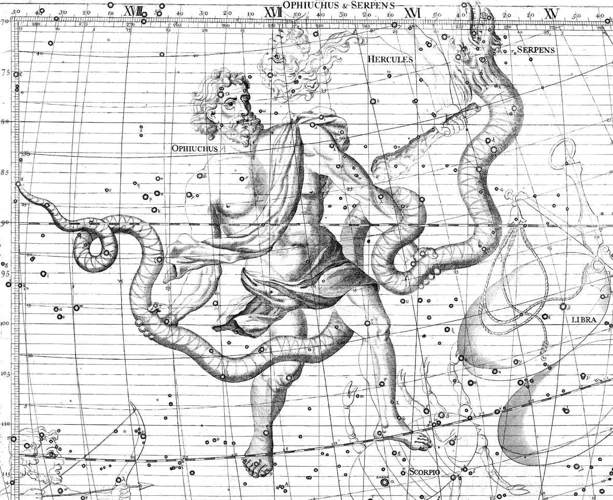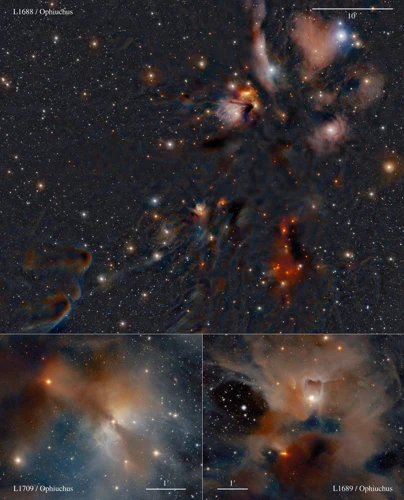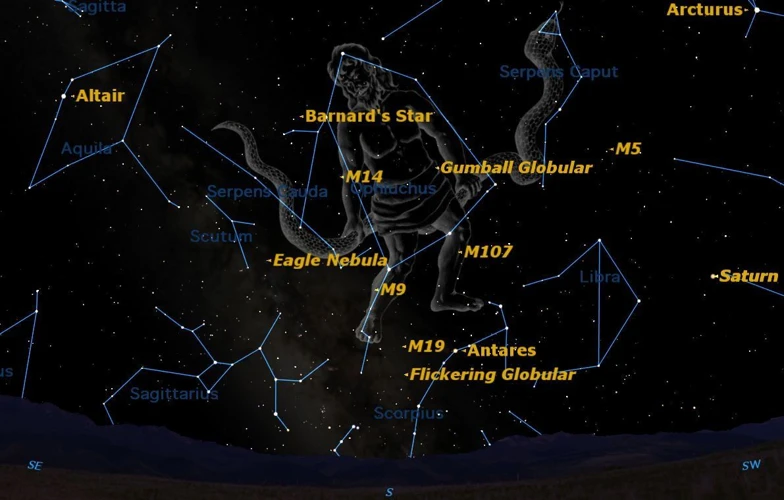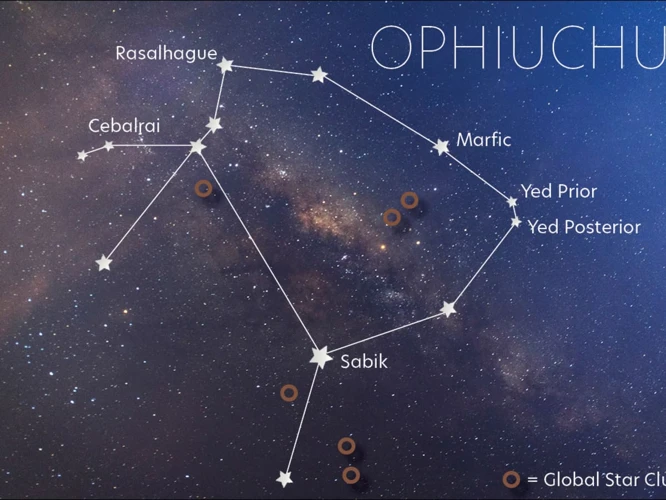As we look up at the glittering night sky, our gaze inevitably falls upon the Cassiopeia Constellation, a celestial wonder that has captivated humanity for centuries. With its distinctive W-shape formation, Cassiopeia holds a wealth of intrigue and mystery that continues to fascinate astronomers and stargazers alike. From its mythological origins to its historical significance and modern-day observations, this enigmatic constellation offers a captivating journey through time and space. Join us as we delve into the mesmerizing history of the Cassiopeia Constellation in all its celestial splendor.
Contents
- The Mythological Origins
- Historical Significance
- Notable Features
- Modern Observations
- Mysteries and Lore
- Conclusion
-
Frequently Asked Questions
- 1. What is the significance of the W-shape formation in the Cassiopeia Constellation?
- 2. Are there any famous deep-sky objects within the Cassiopeia Constellation?
- 3. Why do variable stars exist within the Cassiopeia Constellation?
- 4. Can the Cassiopeia Constellation be observed from both the northern and southern hemispheres?
- 5. How did ancient civilizations interpret the Cassiopeia Constellation?
- 6. Are there any notable planets located within the Cassiopeia Constellation?
- 7. How does the Cassiopeia Constellation contribute to our understanding of stellar evolution?
- 8. What role does the Cassiopeia Constellation play in navigation?
- 9. Is there any significance to the proximity of the Cassiopeia and Andromeda constellations?
- 10. Are there any ongoing research projects focused on studying the Cassiopeia Constellation?
- References
-
Frequently Asked Questions
- 1. Can Cassiopeia be seen from both hemispheres?
- 2. How was Cassiopeia named after the mythological queen?
- 3. Are there any notable stars in the Cassiopeia constellation?
- 4. What are some significant deep-sky objects found in Cassiopeia?
- 5. Is Cassiopeia mentioned in any ancient texts or civilizations?
- 6. Can you see the Cassiopeia constellation all year round?
- 7. Are there any known mysteries or unexplained phenomena associated with Cassiopeia?
- 8. Have any space missions or telescopes explored Cassiopeia?
- 9. Are there any cultural references to Cassiopeia in modern times?
- 10. Can I see Cassiopeia without a telescope?
- References
- Read More
The Mythological Origins

According to ancient Greek mythology, the story of Cassiopeia begins with the queen herself. Cassiopeia, the wife of King Cepheus, was known for her unparalleled beauty. However, her vanity led her to boast that she and her daughter, the beautiful Princess Andromeda, were more beautiful than the sea nymphs, the Nereids. This arrogance angered the sea god Poseidon, who retaliated by sending a sea monster to terrorize the kingdom. In desperation, King Cepheus consulted an oracle, who advised him to sacrifice his daughter to appease the enraged Poseidon. The king reluctantly agreed, and Andromeda was bound to a rock by the sea. But just as the sea monster approached, the hero Perseus arrived, having slain the fearsome Gorgon Medusa. Perseus rescued Andromeda, and in honor of this valiant act, the gods immortalized the heroic couple in the stars, creating the constellations of /uncovering-ancient-constellations/ Andromeda and Cassiopeia. Today, when we gaze upon the Cassiopeia Constellation, we are reminded of the tale of a proud queen, a brave hero, and the enduring power of the gods.
Historical Significance

Throughout history, the Cassiopeia Constellation has held significant importance in various cultures and scientific discoveries. Astronomers and navigators have long relied on the distinctive shape of Cassiopeia to locate other stars and constellations in the night sky. In addition, Cassiopeia has played a role in the study of variable stars, which are stars that exhibit fluctuations in brightness over time. The constellations’ association with mythology has also contributed to its historical significance, as it has sparked the imagination and inspired countless stories and artistic representations. The alignment of Cassiopeia with other celestial objects, such as the intriguing /mysterious-alignment-ophiuchus-celestial-objects/, further adds to its allure and historical intrigue. As our understanding of the universe continues to evolve, the Cassiopeia Constellation remains a celestial beacon of cultural and scientific significance, connecting us to our ancient past and guiding us in our exploration of the cosmos.
Astronomical Discoveries
Astronomers have made remarkable discoveries within the Cassiopeia Constellation, shedding light on the mysteries of the universe. One significant astronomical discovery related to Cassiopeia is the identification of various deep-sky objects within its boundaries. These objects include stunning nebulae, such as the NGC 281, commonly known as the Pacman Nebula, due to its resemblance to the iconic video game character. The Cassiopeia constellation also houses a number of open star clusters, such as the NGC 457, also known as the Owl Cluster. These clusters offer a treasure trove of knowledge about stellar evolution and provide valuable insights into the birth and formation of stars. Additionally, the Cassiopeia A supernova remnant was discovered within the constellation. This remnant, the result of a massive star explosion, has provided scientists with valuable data about stellar deaths and the subsequent dispersal of elements into space. With each new astronomical discovery, our understanding of the Cassiopeia Constellation and the universe as a whole deepens, fueling our curiosity and inspiring us to explore further. To learn more about other celestial events such as /understanding-meteor-showers-meteor-storms/, continue reading our articles on the wonders of the cosmos.
Scientific Contributions
The Cassiopeia Constellation has played a significant role in the field of astronomy, making numerous scientific contributions throughout history. One notable scientific contribution is the discovery of variable stars within the constellation. Variable stars are stars that exhibit changes in brightness over time, and their study has been crucial in advancing our understanding of stellar evolution and characteristics. One prominent example is the star Beta Cassiopeiae, also known as Caph, which is a well-known variable star. Its fluctuations in brightness have been closely observed and analyzed by astronomers, providing valuable insights into stellar physics. Additionally, the Cassiopeia Constellation has served as a guide for astronomers in mapping the night sky and identifying other celestial objects. Its easily recognizable W-shape formation has assisted astronomers in locating and studying a wide range of deep-sky objects, such as galaxies, nebulae, and star clusters. The contributions made by the Cassiopeia Constellation to scientific knowledge reflect the enduring importance of this celestial marvel in the field of astronomy.
Notable Features

Of all the constellations in the night sky, the Cassiopeia Constellation stands out for its remarkable and distinctive features. One notable feature is its W-shape formation, which is easily recognizable and has given rise to various interpretations and stories throughout history. Another intriguing aspect of Cassiopeia is the presence of variable stars. These stars fluctuate in brightness over time, providing astronomers with valuable insights into stellar evolution and characteristics. Additionally, the constellation boasts an array of deep-sky objects such as star clusters and nebulae, including the famous Heart and Soul Nebula. These features make the Cassiopeia Constellation a captivating subject for both amateur stargazers and scientific researchers seeking to uncover the secrets of the universe.
W-Shape Formation
The most striking and distinctive feature of the Cassiopeia Constellation is its unmistakable W-shape formation. Composed of five stars that form the outline of a W or sometimes an M, this arrangement stands out prominently in the night sky. The stars that comprise this pattern, named Alpha, Beta, Gamma, Delta, and Epsilon Cassiopeiae, are all relatively bright and easily visible to the naked eye. Alpha Cassiopeiae, also known as Schedar, is the brightest of the five and represents the queen’s chair. The positioning of these stars creates a visually stunning sight that has captured the imagination of stargazers throughout history. Whether interpreted as the throne of a queen or the wings of a bird, the W-shape formation of Cassiopeia adds a sense of enchantment and wonder to our celestial tapestry.
Variable Stars
One of the notable features of the Cassiopeia Constellation is its abundance of variable stars. These stars, as the name suggests, exhibit variations in their brightness over time. One such variable star is Eta Cassiopeiae, also known as the “Elder Sister of the Pleiades.” It is a multiple star system consisting of at least five stars, with the primary star being a massive blue-white giant. Eta Cassiopeiae regularly fluctuates in brightness, making it a fascinating object of study for astronomers. Another notable variable star in Cassiopeia is Rho Cassiopeiae, an enigmatic supergiant star. Rho Cassiopeiae undergoes irregular eruptions, causing its brightness to increase by several magnitudes. These eruptions are thought to be caused by mass ejections and shell outbursts. Additionally, the Cassiopeia Constellation is home to S Cassiopeiae, a peculiar recurrent nova. Recurrent novae are binary star systems in which a white dwarf star accretes material from its companion star, resulting in periodic thermonuclear outbursts. S Cassiopeiae experiences such outbursts every few decades, causing a sudden increase in brightness that lasts for several weeks. These variable stars in Cassiopeia provide astronomers with valuable opportunities to study stellar evolution, binary systems, and the intricate processes occurring within these celestial bodies.
Deep-Sky Objects
Within the Cassiopeia Constellation, there are several fascinating deep-sky objects that have captured the attention of astronomers and stargazers. One notable deep-sky object is the open star cluster known as the Double Cluster. This stunning pair of star clusters, designated as NGC 869 and NGC 884, is visible to the naked eye and is an awe-inspiring sight through a telescope. Comprised of hundreds of stars, the Double Cluster shines brilliantly against the backdrop of the night sky.
Another remarkable deep-sky object found in Cassiopeia is the Heart Nebula (IC 1805). This intricate emission nebula got its name due to its resemblance to a human heart when viewed in long-exposure photographs. The vibrant colors and swirling patterns make it a favorite target for astrophotography enthusiasts. Located in the Perseus Arm of the Milky Way, the Heart Nebula is a stellar nursery, where new stars are born from vast swaths of gas and dust.
In addition to these prominent deep-sky objects, Cassiopeia is home to other notable celestial wonders, such as the Soul Nebula (IC 1848), the Pacman Nebula (NGC 281), and the Wizard Nebula (NGC 7380). These stunning nebulae dazzle viewers with their intricate shapes, vibrant colors, and the ethereal beauty of the cosmos.
Whether observed through a telescope or admired in astrophotography, the deep-sky objects within the Cassiopeia Constellation offer a mesmerizing glimpse into the magnificence and diversity of our universe.
Modern Observations

In modern times, Cassiopeia has continued to capture the fascination of astronomers and amateur stargazers alike. Through exploration and studies, we have gained a deeper understanding of this remarkable constellation. Scientists have used advanced telescopes to observe and study the various celestial bodies within Cassiopeia. The exploration of this constellation has led to the discovery of numerous deep-sky objects, including galaxies, nebulae, and star clusters. One notable deep-sky object within Cassiopeia is the Pacman Nebula, named for its resemblance to the popular video game character. Amateur astronomers have also made valuable contributions to our understanding of Cassiopeia. With their passion and dedication, they have documented observations of variable stars within the constellation. Studying these stars’ fluctuations in brightness has helped scientists analyze their properties and gain insights into their evolution. The modern observations of Cassiopeia have proved instrumental in unraveling the mysteries of the universe and continue to inspire awe and curiosity in aspiring astronomers.
Exploration and Studies
In the realm of exploration and scientific studies, the Cassiopeia Constellation has captured the attention of astronomers throughout history. Early civilizations, such as the ancient Greeks and Persians, recognized the prominence of Cassiopeia in the night sky and incorporated its pattern into their celestial observations. However, it was not until the advancements in telescopes and technology that further exploration of this captivating constellation was made possible.
From the 17th century onward, astronomers began to study the stars of Cassiopeia in more detail. They discovered that within the constellation lies a plethora of fascinating celestial objects, including star clusters, nebulae, and supernova remnants. Notably, the famous open star cluster known as the Double Cluster was first observed and studied within Cassiopeia. This cluster consists of two adjacent open star clusters, known as NGC 869 and NGC 884, and is a breathtaking sight in the night sky.
Astronomers have also identified several other star clusters within Cassiopeia, such as the NGC 7789 cluster, which is believed to be approximately 1.6 billion years old. These clusters provide invaluable insight into stellar evolution and the formation of galaxies.
Additionally, the Cassiopeia A supernova remnant, a result of a massive star’s explosive death, has intrigued scientists for decades. Studying this phenomenon has deepened our understanding of supernovae and the subsequent dispersal of heavy elements necessary for the formation of new stars and planetary systems.
Modern-day studies and space exploration missions, such as those conducted by NASA and other space agencies, have expanded our knowledge of Cassiopeia. Through satellite observations and space telescopes, astronomers have been able to capture detailed images and gather data on the celestial objects within the constellation. These advancements contribute to our ongoing exploration and understanding of the vastness of the universe.
The exploration and scientific studies conducted on the Cassiopeia Constellation have unveiled a trove of celestial wonders, allowing us to delve deeper into the mysteries of the cosmos. The continued efforts of astronomers and space agencies promise to uncover even more captivating discoveries within this enigmatic constellation, fueling our curiosity and fascination with the vastness of the universe.
Amateur Astronomer’s Perspective
The Cassiopeia Constellation has long been a favorite among amateur astronomers, who find great joy and fulfillment in exploring its celestial wonders. From the comfort of their backyards or local observatories, amateur astronomers have the opportunity to observe and photograph the various features of Cassiopeia. One of the most notable features that catches their attention is the W-shape formation of the constellation, which stands out prominently in the night sky. Amateur astronomers often use star charts and stargazing apps to locate and identify the stars that form the distinct pattern. Additionally, they enjoy observing the variable stars within Cassiopeia, which undergo periodic changes in brightness. These amateur stargazers contribute to scientific research by monitoring and recording the brightness fluctuations of these stars over time. Amateur astronomers can take advantage of their telescopes and binoculars to explore the deep-sky objects within Cassiopeia, such as open star clusters, nebulae, and even distant galaxies. Through these observations, amateur astronomers gain a deeper appreciation for the vastness and beauty of the universe. Whether they are capturing breathtaking images, participating in citizen science projects, or simply marveling at the wonders above, the amateur astronomer’s perspective adds a unique and valuable dimension to our understanding of the Cassiopeia Constellation.
Mysteries and Lore

Within the realm of the Cassiopeia Constellation, a myriad of mysteries and lore abound, captivating the imaginations of astronomers and enthusiasts. One intriguing enigma lies in the unexplained phenomena surrounding the constellation. Astronomers have observed peculiar variations in the brightness of certain stars within Cassiopeia, known as variable stars. These stars exhibit irregular fluctuations in their luminosity, leaving scientists pondering the cause behind these mysterious changes. Additionally, Cassiopeia is home to a host of deep-sky objects, such as nebulae and star clusters, that have long fascinated astronomers with their intricate structures and ethereal beauty. Among these is the famous Heart and Soul Nebulae, which captivate observers with their intricate formations. The wealth of mysteries and lore surrounding the Cassiopeia Constellation adds to its allure and continues to inspire further exploration and study of its celestial wonders.
Unexplained Phenomena
Within the fascinating realm of the Cassiopeia Constellation, there are several unexplained phenomena that continue to pique the curiosity of astronomers. One such phenomena is the presence of unidentified flashing objects known as anomalous lights. These sporadic and enigmatic bursts of light appear for brief periods and are often observed in the vicinity of the constellation. Scientists have theorized that these lights could be the result of various celestial processes, such as the interaction of cosmic particles or the reflection of sunlight off orbiting space debris. However, the exact cause of these anomalous lights remains a mystery, leaving researchers intrigued and eager to uncover the truth. Another unexplained phenomenon associated with Cassiopeia is the occasional occurrence of unidentified flying objects (UFOs) in its vicinity. Reports of UFO sightings near the constellation have sparked speculation about extraterrestrial activity and interstellar travel. While skeptics attribute these sightings to misinterpretations or optical illusions, believers in alien life find these accounts intriguing and suggestive of a deeper cosmic connection. Whether these unexplained phenomena are the result of natural or extraterrestrial causes, they serve to remind us of the vastness and mystery of the universe that stretches beyond our earthly understanding.
Mythical Interpretations
When it comes to mythical interpretations of the Cassiopeia Constellation, different cultures have found their own meaning and stories woven into its celestial tapestry. In Chinese mythology, the stars that form the W-shape of Cassiopeia are believed to represent a heavenly bird, known as the Red Bird of the South. This bird was associated with the summer season and brought good fortune and prosperity. In Native American folklore, the constellation is often seen as a great celestial hunter, with the bright star Gamma Cassiopeiae representing his hunting knife. The Iroquois people believed that this hunter was chasing a great bear across the night sky, represented by the stars of the Big Dipper. In Arabic astronomy, Cassiopeia is sometimes depicted as a shepherdess who tends her flock of celestial sheep. These varied interpretations highlight the rich cultural tapestry woven into the stories and myths surrounding Cassiopeia. It demonstrates how the constellation’s beauty and enigmatic form have inspired countless tales and beliefs across different civilizations throughout history.
Conclusion

In conclusion, the Cassiopeia Constellation stands as a testament to our fascination with the night sky and the stories we have weaved around it. From its mythological origins to its historical significance and modern-day observations, this celestial wonder has captured the imaginations of countless generations. The W-shaped formation of Cassiopeia continues to serve as a guide for stargazers and astronomers, leading our eyes to the splendors of variable stars and deep-sky objects. Whether it’s the exploration and studies carried out by scientists or the observations made by amateur astronomers, the allure of Cassiopeia remains undiminished. As we ponder over the mysteries and lore surrounding this constellation, we are reminded of the vastness and beauty of our universe. So, the next time you find yourself gazing up at the night sky, take a moment to search for the Cassiopeia Constellation, and let its brilliance inspire you to marvel at the wonders of the cosmos.
Frequently Asked Questions

1. What is the significance of the W-shape formation in the Cassiopeia Constellation?
The W-shape formation is one of the most recognizable features of the Cassiopeia Constellation. It is formed by five bright stars that appear to outline the letter “W” in the night sky.
2. Are there any famous deep-sky objects within the Cassiopeia Constellation?
Absolutely! The Cassiopeia Constellation is home to several remarkable deep-sky objects, including the Bubble Nebula, the Heart Nebula, and the open star cluster Messier 52.
3. Why do variable stars exist within the Cassiopeia Constellation?
Variable stars in the Cassiopeia Constellation are stars whose brightness fluctuates over time. This variability is due to various factors such as pulsations, eclipses, or other intrinsic processes occurring within the star.
4. Can the Cassiopeia Constellation be observed from both the northern and southern hemispheres?
No, the Cassiopeia Constellation is primarily visible from the northern hemisphere. It is positioned close to the celestial pole, making it almost circumpolar, meaning it remains visible year-round in northern latitudes.
5. How did ancient civilizations interpret the Cassiopeia Constellation?
Ancient civilizations viewed the Cassiopeia Constellation as a celestial representation of Queen Cassiopeia. They associated it with regal beauty, vanity, and the consequences of excessive pride.
6. Are there any notable planets located within the Cassiopeia Constellation?
No, the Cassiopeia Constellation does not contain any notable planets. However, astronomers continue to search for exoplanets within this region of the sky using advanced detection techniques.
7. How does the Cassiopeia Constellation contribute to our understanding of stellar evolution?
The Cassiopeia Constellation provides astronomers with a wealth of data on stellar evolution. By studying the different stages of stars within this constellation, scientists can unravel the intricacies of stellar birth, life, and death.
The Cassiopeia Constellation serves as a navigational aid to astronomers and stargazers. Its distinctive W-shape provides a recognizable marker in the night sky, allowing people to orient themselves and locate other celestial objects.
9. Is there any significance to the proximity of the Cassiopeia and Andromeda constellations?
Yes, the proximity of the Cassiopeia and Andromeda constellations is not coincidental. In Greek mythology, both constellations are connected through the story of Princess Andromeda and her rescue by the hero Perseus.
10. Are there any ongoing research projects focused on studying the Cassiopeia Constellation?
Yes, astronomers and researchers continue to explore and study the Cassiopeia Constellation. Their investigations range from observing and cataloging celestial objects within the constellation to using advanced telescopes and instruments to gain insights into its cosmic secrets.
References
Frequently Asked Questions

1. Can Cassiopeia be seen from both hemispheres?
Yes, Cassiopeia can be seen from both the northern and southern hemispheres. However, its visibility and position in the sky may vary depending on the observer’s location.
2. How was Cassiopeia named after the mythological queen?
Cassiopeia was named after the queen in Greek mythology who boasted about her beauty and angered the sea god Poseidon. The constellation’s distinct “W” shape is said to resemble Cassiopeia’s throne.
3. Are there any notable stars in the Cassiopeia constellation?
Yes, Cassiopeia is home to several notable stars. One of the most famous is Gamma Cassiopeiae, a variable star that exhibits irregular changes in brightness.
4. What are some significant deep-sky objects found in Cassiopeia?
Cassiopeia is home to several noteworthy deep-sky objects, including the Heart Nebula, the Soul Nebula, and the Pacman Nebula. These objects are popular targets for astrophotographers and amateur astronomers.
5. Is Cassiopeia mentioned in any ancient texts or civilizations?
Yes, Cassiopeia has been mentioned in ancient texts and is associated with various civilizations. For instance, it is referenced in Ptolemy’s Almagest and is depicted in ancient Egyptian star charts.
6. Can you see the Cassiopeia constellation all year round?
Yes, Cassiopeia can be seen throughout the year, but its visibility changes depending on the season. During certain months, it may be more prominent in the night sky, while in others, it may be lower on the horizon.
7. Are there any known mysteries or unexplained phenomena associated with Cassiopeia?
While there are no specific mysteries tied exclusively to Cassiopeia, the constellation has been a subject of fascination and inspiration for astronomers and storytellers throughout history, leading to various interpretations and mythical associations.
8. Have any space missions or telescopes explored Cassiopeia?
Several space missions and telescopes have observed and studied objects within the Cassiopeia constellation. Noteworthy examples include the Hubble Space Telescope and the Chandra X-ray Observatory.
9. Are there any cultural references to Cassiopeia in modern times?
Cassiopeia continues to capture the imagination of the modern world, with references appearing in literature, films, and even within the field of astronomy. Its distinct shape and mythology make it a recognizable and enduring part of human culture.
10. Can I see Cassiopeia without a telescope?
Yes, Cassiopeia is visible to the naked eye, and its distinct “W” shape is relatively easy to identify. However, a telescope can enhance the viewing experience and reveal more intricate details of the constellation’s stars and deep-sky objects.
References
- Cassiopeia Constellation – Key Facts, Star Map, & Mythology
- The Constellation Cassiopeia | Pictures, Facts, and Location
- The Cassiopeia Constellation







